5 Top tips to prevent and ease arthritis in cats

Author Gill Shaffer Last updated 24th April 2020
- Pet Health
Cats can be agile, playful and avid hunters, but like us, they’re also prone to degenerative diseases. They are equally able to develop arthritis, also known as Osteoarthritis or Degenerative Joint Disease, which can cause pain and inflammation in the joints, and the breakdown of cartilage. It’s an underdiagnosed disease with *60% of cats over 12 years-old often displaying symptoms1.
With the right care, we can support our pets ageing process and help them stay agile and pain free for longer. These tips will give your cat a better chance of a better quality of life in older age.
- A healthy diet
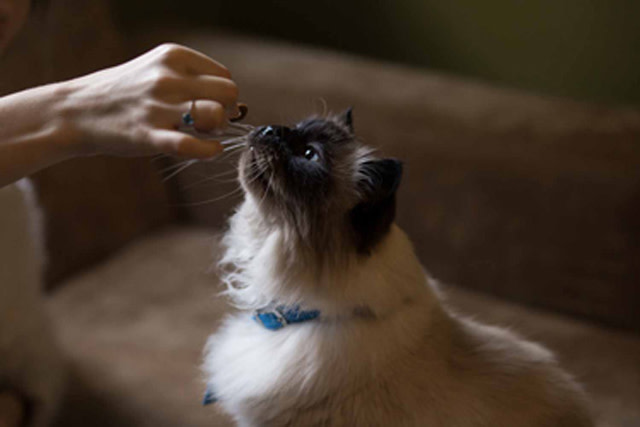
Diet is of the utmost importance in cats and a good start at an early age will allow them to lead a healthier life in the long term. Buying age-specific, all-natural food will set them on the right track.
However, if your cat is experiencing joint discomfort, some of the dietary suggestions below may help.
Fish Oil: A high quality fish oil is possibly the most significant dietary requirement for your cat. With its important omega-3 fatty acid, it can combat inflammation in your cat’s joints. Several studies have shown that cats who consume fish oil are more active and less likely to be lame or limp2. However, you cannot use Cod Liver Oil as the fish oil as this contains too much vitamin A and D for your cat.
Protein: Protein can build muscle, aid in the production of cartilage and fight against muscle loss. These three factors will be crucial for your elderly cats’ well-being and help protect their joints. However, as cats age, their ability to digest protein declines. If your cat seems to have trouble digesting protein, you should consult your veterinarian so you can agree on the suitable amount of protein to feed your cat.
Green Lipped Mussels Extract: GLME has become a popular arthritic option for not only cats but dogs and horses too. It contains significant ingredients like minerals, antioxidants and amino acids, but more importantly contains chondroitin, glycosaminoglycans and glucosamine sulphate. These chondroprotectant’s are able to repair damaged joints and aid in the growth of cartilage. It can be found in pill form or can be injected by a vet.
Turmeric: Just like for humans, joint supplements like turmeric for cats can be very beneficial. Due to its anti-inflammatory properties, turmeric is a great addition and can support an arthritic cat in discomfort. It can also benefit their heart, pancreas, spleen, liver, intestines and stomach. A great overall supplement for cats to support their well-being.
Just as adding these dietary requirements into your cats' lifestyle is important, what's equally important is that you don’t overfeed your cat. Any excess weight your cat has will affect their joint health. The extra weight will place pressure and stress on your cat’s joints and will increase inflammation. Keeping your cats’ on the skinnier side and placing them on a healthy and monitored weight-loss scheme if necessary, will decrease their chances of experiencing joint pain earlier on in life.
- Keep your cat hydrated
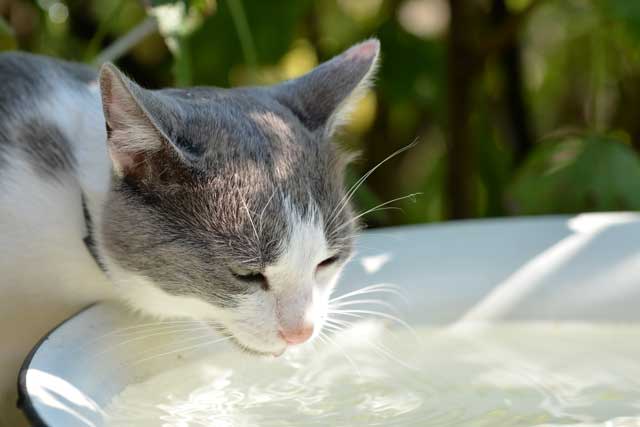
Water is essential for cats, and they should be given clean water that is topped up consistently. When cats aren’t capable of staying hydrated, they can be prone to constipation and kidney disease, and these side effects can worsen with age. If you really want to be more proactive with this, placing more water stations around the house will allow your cat to have more access with less movement.
With some elderly cats possibly forgetting to drink water, another way to include more hydration into your cats' diet is by adding wet food to their regime. The soft texture will aid in your cats' digestion; it will be easier for them to consume and add to their hydration.
- Be observant
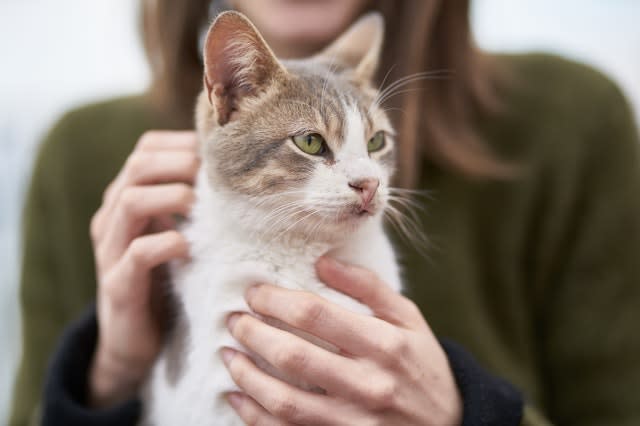
As we have said, joint pain in cats often goes undiagnosed due to the cats' ability to conceal their discomfort. While some cats will try to let you know when they are in pain, others may not display any signs they are suffering from arthritis or other issues. As hunters, they more often than not try to stay strong and show almost no signs of pain of injury when it has occurred. Although to an observant owner, there will be some small but significant differences.
Older cats often develop arthritis in their elbow or hips but their lower back and knees are also prone to discomfort. This means that signs can generally include:
Difficulty moving - not wanting to jump on usual surfaces or difficulties when using a litter box.
Reduced activity – sleeping more than usual or uninterested in playing.
Limping – or lameness.
Changes in their usual grooming habits – dull coat or over-grooming in areas with discomfort.
Behavioral changes – getting upset easily or avoiding interaction.
Once again, it’s important to highlight that although these changes in writing look significant, it can be extremely subtle to the human eye. Don’t be discouraged if you weren’t able to recognise them, it just means your cat is strong-willed and clever.
- Daily exercise & mental stimulation
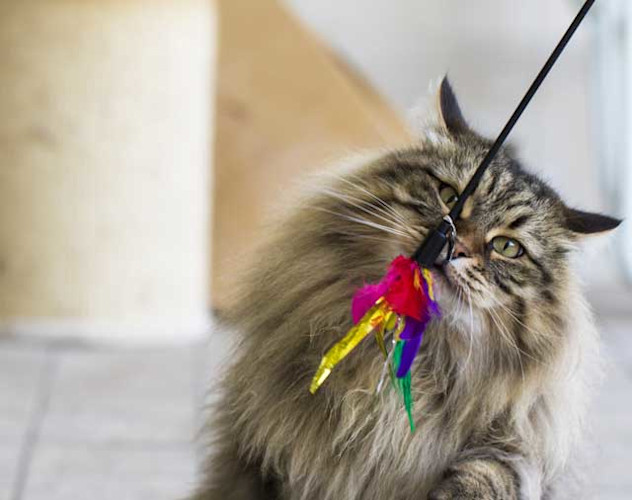
Along with keeping your cat at a healthy weight, it’s also vital to keep them active and stimulated mentally. With around 70% of cats being indoors, it’s often challenging for them to keep up with their instinctive abilities. As their owners, it’s up to us to create these for them and promote mobility throughout their lives. Below are some ways you can do this.
Treat Hunting: Treat hunting means you use your cats’ treats to catch their attention, then throw it in the distance for them to chase and eat. You’ll be surprised at how much your cats will love the challenge.
Stimulating Toys: There are many toys available to keep your feline friends occupied, such as wands, toy mice, chase toys, catnip mice or treat-dispensing toys.
Visual Stimulation: Having a space in your home with a window where your cat can sit and stare at the outside world is great for their mental stimulation. An added bonus would be some sun exposure too.
- Cat comfort & movement
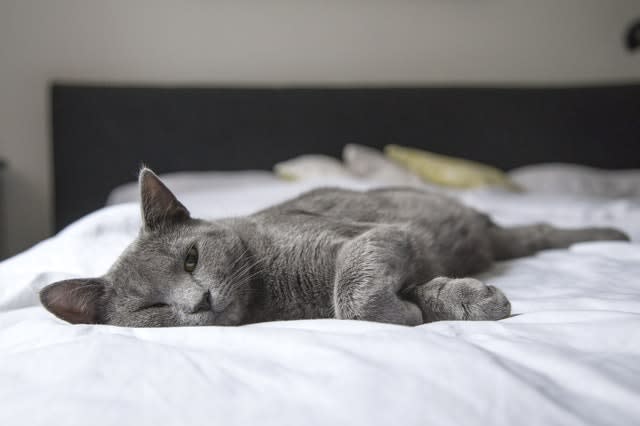
If your cat does end up experiencing joint pain, there are some specific things you can do to support your cats' usual daily activities. For instance, placing more familiar things around the house, like soft bedding and litter boxes, allowing your cat easier access to these essential things.
On the same note, ramps or planks around the home can help support your cat’s access to its favourite places. Last but not least, some extra TLC goes a long way. Supporting your cat with its grooming by brushing it regularly and making sure to care for your pets claws, eyes and so forth.
With age, less flexibility in your cat’s joints is inevitable. However, there are ways you can manage and delay discomfort, help with pain relief, as well as support them in their senior years.
References
[1] Osteoarthritis in cats. Kerwin SC. (2010). Osteoarthritis in cats. Topics in Companion Animal Medicine, 25(4), 218-23.
[2] Journal of Animal Physiology and Animal Nutrition, August 11, 2012
